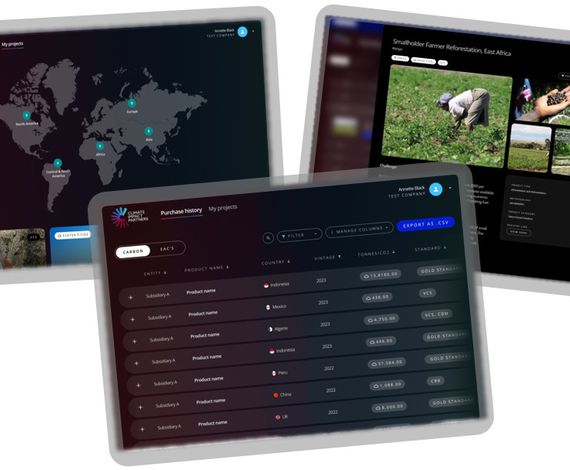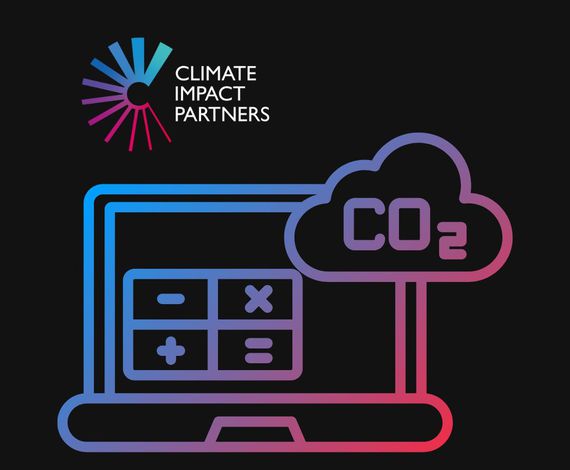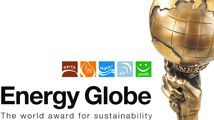What is sustainability reporting?
Companies use sustainability reporting to publicly communicate information about their carbon emissions, energy use, waste management, labor practices, diversity, community engagement, and governance structures. Sustainability reporting is often heard in the context of a company’s environmental, social, and governance (ESG) impacts.
Similar to the objectives of financial reporting, sustainability reporting provides stakeholders – such as investors, customers, employees, and regulators – with insights on how the company is progressing on its sustainability metrics. Reporting enhances transparency and accountability and can help companies identify risks, opportunities, and areas for improvement in their operations.
Sustainability reporting enables companies to demonstrate their commitment to sustainable practices and to measure progress over time. It also addresses increasing regulatory demands and aligns businesses with global trends on responsible and ethical practices, often improving reputation, stakeholder trust, and long-term financial performance.
Why is sustainability reporting important?
We know that companies have a big role to play when it comes to impacts on society. Major corporations, given their size and reach, have the potential to create significant positive impacts and influence consumer behavior, policies, and broader action globally.
As such, sustainability reporting contributes to the global effort to address pressing issues like climate change, social inequality, and resource depletion by encouraging businesses to adopt sustainable practices.
As more and more companies engage in sustainability reporting, individuals can better understand the impact of the products and services they use, empowering them to make more informed, values-driven choices. This transparency also educates individuals on key sustainability issues and the role businesses play in addressing them, which can inspire more conscious consumer behavior and personal accountability.
Additionally, as people see the tangible actions companies take, they become more aware of how everyday actions and choices contribute to broader sustainability efforts, fostering a collective sense of responsibility for global challenges like climate change and social equity.
When did sustainability reporting begin?
Sustainability reporting grew out of the environmentalism movements in the 1970s and 1990s, when companies started voluntarily reporting their environmental impacts. However, the first major milestone in sustainability reporting came in 1997 with the establishment of the Global Reporting Initiative (GRI), which developed the first standardized guidelines to help companies measure and report their sustainability performance.
In the 2000s, reporting expanded beyond environmental impacts to include social and governance issues, spurred by events like the Enron scandal and the global financial crisis, which highlighted the importance of transparency and ethical governance. Since then, additional frameworks have emerged, each offering specialized guidance for sustainability and corporate ESG reporting.
Today, sustainability reporting is increasingly mandated by governments, with more companies integrating these disclosures into their annual reports. As stakeholders demand greater accountability, reporting has become essential for companies aiming to demonstrate their commitment to sustainable and ethical practices.
Who is responsible for sustainability reporting?
Many companies have dedicated sustainability or ESG teams that gather, analyze, and report on relevant data. These teams coordinate cross-departmental efforts to ensure comprehensive coverage of environmental, social, and governance issues.
However, the CEO and other top executives are ultimately accountable for sustainability performance and reporting. They set the tone for the company’s commitment to sustainability and are often involved in communicating these efforts to stakeholders.
Increasingly, boards are taking an active role in overseeing sustainability strategies. They are responsible for ensuring that sustainability goals align with the company’s overall strategy and risk management practices.
What is the difference between ESG reporting, sustainability reporting, and corporate social responsibility (CSR)?
ESG reporting focuses on specific environmental, social, and governance metrics, primarily to inform investors and assess risks, using established frameworks.
Sustainability reporting takes a broader approach, encompassing a company's overall impact on society and the environment, aiming to communicate long-term sustainability strategies to a wider audience, including customers and regulators.
In contrast, corporate social responsibility (CSR) emphasizes a company’s ethical obligations and social contributions, often showcasing voluntary initiatives and community engagement rather than quantitative metrics.
Common sustainability reporting frameworks
Sustainability reporting frameworks help guide companies in disclosing their environmental, social, and governance (ESG) practices in a standardized, transparent way. Key frameworks include:
Global Reporting Initiative (GRI)
GRI provides comprehensive standards for reporting on a broad range of sustainability issues, including environmental impact, labor practices, human rights, and anti-corruption. GRI is used by more than 14,000 organizations in over 100 countries, including 73% of the largest 250 companies in the world, making it one of the most widely used frameworks.
Sustainability Accounting Standards Board (SASB)
SASB was established in 2011 and focuses on industry-specific sustainability metrics related to financial performance, providing sector-specific standards that help investors understand sustainability risks and opportunities within different industries.
Task Force on Climate-related Financial Disclosures (TCFD)
Established by the Financial Stability Board (FSB) in 2017 and now monitored by the IFRS Foundation, TCFD provides guidelines for reporting on climate-related financial risks and opportunities, aiming to improve transparency around climate change’s impact on financial performance.
International Sustainability Standards Board (ISSB)
Created under the International Financial Reporting Standards (IFRS) Foundation, the ISSB standards cover a wide range of sustainability topics, including climate risk, environmental impact, and social issues. They align closely with well-known frameworks like the Task Force on Climate-related Financial Disclosures (TCFD), focusing on climate-related risks and opportunities.
Carbon Disclosure Project (CDP)
CDP is a database that contains the world's largest and most comprehensive set of self-reported corporate environmental data. Established in 2000, CDP aligns with TCFD standards and focuses specifically on environmental impact – carbon emissions, deforestation, water security, biodiversity, plastics, and oceans. More than 23,000 companies report to CDP.
Integrated Reporting Framework
Developed in 2013 and now managed by IFRS Foundation, the Integrated Reporting Framework provides a comprehensive view on how a company creates value over time. This type of reporting looks at company performance against several different types of ‘capital’: financial capital, manufactured capital, intellectual capital, human capital, social and relationship capital, and natural capital.
UN Global Compact
The UN Global Compact is a voluntary initiative that provides businesses with a framework based on principles in the areas of human rights, labor standards, environmental protection, and anti-corruption. UN Global Compact has more than 20,000 business participants worldwide.
Climate Impact Partners is a proud participant of the UN Global Compact. Learn more about our participation here.
Components of sustainability reports
A corporate sustainability report typically includes the following components:
- Environmental performance: This will often include details on a company’s carbon emissions (including Scope 1, 2, 3 emissions and beyond), energy usage (including renewable energy), water consumption, waste management, and efforts to reduce environmental impact, including biodiversity protection and investment in new technologies.
- Social responsibility: This covers labor practices, diversity and inclusion, supply chain transparency, employee well-being, community engagement, and human rights initiatives.
- Governance and ethics: Outlines corporate governance structures, ethical standards, and policies related to ESG oversight.
- Economic performance: Shows the financial aspects of sustainability, such as cost savings from resource efficiencies, and the economic value generated for stakeholders.
Benefits of sustainability reporting
Sustainability reporting offers several key benefits:
- Increased transparency, trust, and brand value: By publicly disclosing sustainability practices, companies build trust with investors, customers, employees, and regulators, who value transparency and ethical business practices. This in turn leads to an enhanced brand reputation that differentiates them in the market.
- Risk management: Sustainability reporting enables companies to identify and manage environmental, social, and governance risks, such as regulatory changes, climate impacts, supply chain vulnerabilities, and social issues. It also allows them to address potential issues proactively and comply with evolving regulations.
- Operational efficiency and cost savings: Reporting often helps identify areas where resources like energy, water, and materials are used excessively or inefficiently. This can lead to streamlined processes, reduced energy expenses, and better waste management, ultimately enhancing both sustainability and profitability.
- Attracting investment and talent: ESG-focused investors increasingly seek out companies with strong sustainability practices, and comprehensive and accurate reporting allows investors to make informed decisions. Similarly, job seekers are increasingly looking for companies that are operating sustainably and that align with their own values.
- Alignment with global best practices: Reporting on sustainability efforts aligns businesses with global initiatives like the UN Sustainable Development Goals (SDGs), contributing to broader social and environmental impacts.
Challenges and criticisms of sustainability reporting
Sustainability reporting faces several challenges and criticisms, which can lead to confusion about a company’s true sustainability impact:
- Lack of standardized frameworks: As shown above, multiple frameworks exist, and none of them are universally accepted. This can lead to inconsistent data that is difficult to compare across companies and industries.
- Greenwashing concerns: Companies may be tempted to overstate their sustainability efforts, known as greenwashing. They may use vague language, misleading labels, or superficial initiatives to distract from their actual environmental impact.
- Data collection and quality: Quantifying certain social and environmental impacts, like employee well-being or biodiversity impact, can be difficult, leading to challenges in accurately measuring and reporting sustainability performance. Gathering accurate and comprehensive data across various departments and supply chains can also be challenging, especially for complex operations, leading to unreliable and incomplete reporting.
- Cost and resources: Developing and implementing robust reporting practices can require significant time, expertise, and financial resources, which may deter some companies from participating. Companies often need to hire experts, gather detailed data, and analyze various aspects of their operations to produce an accurate report.
- Stakeholder engagement: Balancing the interests and expectations of diverse stakeholders, from investors and customers to employees and communities, can be challenging, as different groups may prioritize different aspects of sustainability. For example, investors may focus on financial risks related to climate change, while employees might be more interested in fair labor practices.
- Limited accountability: Most reports are voluntary, and companies can often choose what information to include or leave out. Less robust sustainability reports may not provide enough supporting evidence for sustainability claims, making it difficult to verify their accuracy. Unlike financial reporting, there are few strict regulations or enforcement around sustainability data, so companies might highlight positive aspects while downplaying or omitting negative ones.
Examples of sustainability reporting
Successful reporting in major corporations
Microsoft is a good example of how major corporations are developing successful sustainability reports. Microsoft sets clear and some of the most ambitious sustainability goals and regularly shares detailed progress updates. They use recognized standards, making it easier for people to understand and compare their efforts.
Microsoft also is transparent about challenges, showing they are committed to real progress, not just good PR. This openness makes Microsoft a strong model of honest and effective sustainability reporting. By sharing their progress, challenges, and learnings, they are able to influence other companies in the industry and beyond.
Amazon’s sustainability reporting stands out not only for its comprehensiveness, transparency, and ambition, but also for its focus on collaboration and supply chain. Given Amazon’s scale and influence in the industry, this allows them to drive sustainability standards forward, encouraging other companies to adopt similar goals and creating a ripple effect beyond its own operations.
Climate Impact Partners is a proud signatory of The Climate Pledge, an initiative of Amazon and Global Optimism that encourages companies to commit to achieving net-zero carbon emissions by 2040. The Climate Pledge has more than 500 signatories in 45 countries and across nearly 60 industries.
When it comes to major corporations and sustainability reporting, there is a growing emphasis on transparency, where companies are more open about their environmental and social impacts, including both successes and challenges.
Many corporations are adopting standardized frameworks like GRI or TCFD to make their reports clearer and easier to compare. There’s also a focus on setting ambitious goals, such as achieving net-zero carbon emissions, and integrating sustainability into core business strategies.
Additionally, companies are increasingly using technology and data analytics to track and report their sustainability metrics more accurately, while also engaging stakeholders to understand their concerns and expectations better.
Small and medium enterprises (SMEs) and sustainability reporting
A leading commercial property company in the UK, British Land has been reporting its sustainability efforts since 2011, emphasizing clear and open reporting to build trust with stakeholders. British Land focuses on its social impact and community engagement, showcasing a trend where SMEs are increasingly highlighting their contributions to local communities and social responsibility in their sustainability efforts. The company also integrates sustainability goals into its overall business strategy, rather than treating it as a separate initiative.
Known for its environmental activism, Patagonia publishes clear and engaging sustainability reports that highlight its commitment to ethical sourcing, fair labor practices, and environmental protection. Their reports often include stories about their initiatives and the impacts of their sustainability efforts. The company highlights local and global impacts, incorporates clear metrics and goals, and actively advocates for environmental issues while educating consumers.
As SMEs are becoming more aware of sustainability's importance, they are finding effective ways to communicate their efforts. SMEs tend to use more simplified reporting, focusing on key impacts rather than overwhelming details. They also emphasize local contributions to communities and use digital tools to streamline the reporting process.
SMEs form partnerships to share resources and improve sustainability efforts, engage more with stakeholders to incorporate their feedback, and integrate sustainability into their overall business strategy to demonstrate how responsible practices can drive growth and innovation.
Sector-specific sustainability reporting
Sector-specific sustainability reporting uses a tailored approach based on the unique needs and challenges of a company’s industry. Instead of using a one-size-fits-all approach, these reports focus on the specific issues that matter most to each sector—like energy use for energy companies, supply chain practices in fashion, or waste management in manufacturing.
This way, companies can communicate their sustainability efforts more clearly to their audience, stay on top of regulations, and meet industry standards while showing their impact on the environment and society in a way that makes sense for their specific context.
For example, in the food and beverage industry, Unilever focuses on sustainable sourcing, reducing plastic waste, and improving livelihoods of the people in its value chain. They include metrics on their plastic footprint and the number of suppliers that they are helping to earn a living wage.
In the automotive industry, Ford’s sustainability reports address the company’s commitment to reducing greenhouse gas emissions and developing electric and hybrid vehicles, providing insights into their sustainability goals related to manufacturing processes, supply chain management, and community engagement.
Skanska, one of the largest construction and development companies in the world, emphasizes green building practices, energy efficiency, and sustainable materials in their sustainability reporting. They include metrics on reducing carbon emissions from construction activities and promoting sustainable development in the communities they serve.
Is sustainability reporting mandatory?
It depends on the country and the specific regulations in place. It can also depend on the company’s size and sector. The UK, the EU, the US, and other countries around the world have proposed or enacted legislation regulating the disclosure of environmental, social, and governance metrics.
However, the trend is increasingly leaning toward more countries enacting legislation regulating sustainability reporting, especially for large companies. It should be noted that in the absence of governmental regulation, many companies will disclose this information voluntarily to meet stakeholder expectations and demonstrate corporate responsibility.
Legal and regulatory landscape of sustainability reporting
The legal and regulatory landscape for sustainability reporting is becoming increasingly structured and mandatory in many regions, responding to growing concerns from governments, investors, and the public about environmental and social issues.
Traditionally, companies have voluntarily disclosed information about their environmental, social, and governance (ESG) practices, often in standalone sustainability reports. However, voluntary reporting led to inconsistencies, making it difficult for stakeholders to compare companies' performance. Today, regulatory bodies worldwide are stepping in to establish clearer, standardized frameworks.
North America
In the United States, the U.S. Securities and Exchange Commission (SEC) in 2024 adopted the first rules for climate-related disclosures, requiring public companies to disclose information on climate risks, greenhouse gas emissions, and how they manage climate-related risks. Although the U.S. doesn’t yet mandate the same level of detail as the EU, this indicates a shift toward increased accountability.
The US Securities and Exchange Commission’s rules requiring US-listed companies to disclose climate-related risks and information is a positive step forward in bringing greater transparency and credibility to corporate climate action.
Some states in the US have proposed or enacted regulations for environmental, social, and governance (ESG) reporting. California, for instance, has introduced some of the most stringent state-level regulations. California’s Transparency in Supply Chains Act mandates that certain large companies disclose efforts to eliminate human trafficking and forced labor from their supply chains. Additionally, California’s Climate Corporate Accountability Act proposes requiring large corporations that do business in the state to disclose greenhouse gas emissions across their supply chains and operations.
Canada is also introducing climate-related disclosure requirements. Under the Canadian Business Corporations Act (CBCA), large, federally incorporated private companies will be required to publish climate disclosures aligned with the Task Force on Climate-related Financial Disclosures (TCFD) framework.
Europe
In the European Union (EU), the Corporate Sustainability Reporting Directive (CSRD) is one of the most prominent frameworks, requiring thousands of companies to disclose detailed information about their sustainability practices, risk management, and impacts. The EU CSRD directive builds on previous regulations like the Non-Financial Reporting Directive (NFRD), expanding the scope of mandatory reporting to include more companies and require more comprehensive data. The EU has also developed the European Sustainability Reporting Standards (ESRS) to standardize how companies report, ensuring the information is reliable, comparable, and aligned with broader EU goals, such as the Green Deal.
The United Kingdom also enforces mandatory corporate ESG reporting through the Financial Conduct Authority (FCA), which mandates climate-related disclosures for companies listed on the London Stock Exchange. These disclosures follow the recommendations of the Task Force on Climate-related Financial Disclosures (TCFD), addressing climate risks and opportunities.
Asia
Singapore has established mandatory sustainability reporting requirements primarily through the Singapore Exchange (SGX), which requires listed companies to publish annual sustainability reports that cover environmental, social, and governance (ESG) factors aligned with International Sustainability Standards Board (ISSB) standards.
The Securities and Exchange Board of India (SEBI) introduced the Business Responsibility and Sustainability Report (BRSR), a set of ESG metrics that India’s largest companies are required to report on.
Best practices for effective sustainability reporting
For effective sustainability reporting, companies should focus on a few best practices to ensure their reports are clear, relevant, and useful for stakeholders:
- Prioritize materiality: Identify and report on the most relevant environmental, social, and governance (ESG) issues that significantly impact the business. Material topics might include greenhouse gas emissions, water usage, labor practices, or community impact, depending on the industry and stakeholders’ concerns.
- Use clear, consistent frameworks: Adopt recognized reporting standards like those from the Global Reporting Initiative (GRI), Task Force on Climate-related Financial Disclosures (TCFD), or the ISSB standards. This consistency allows stakeholders to compare performance across companies and sectors.
- Provide quantitative data and set goals: Include metrics that can be tracked over time, such as emissions levels, energy consumption, and workforce diversity statistics. Setting clear goals, like reducing emissions by a specific percentage by a set date, helps demonstrate commitment and progress.
- Ensure transparency and honesty: Effective reports address both successes and areas for improvement. Being transparent about challenges, such as difficulties in meeting targets, builds trust and gives a more realistic view of a company’s sustainability journey.
- Engage stakeholders: Engage with stakeholders, such as investors, customers, and community members, to understand their interests and ensure the report addresses their key concerns. This feedback can also guide the development of meaningful sustainability strategies.
By following these practices, companies can create sustainability reports that effectively communicate their impact, performance, and long-term commitment to ESG goals.
- ESG management platforms like Enablon, EcoVadis, and SAP offer comprehensive ESG data management that helps companies monitor sustainability data across various metrics, manage compliance, and generate reports for stakeholders.
- Tools designed around TCFD, like the CDP Climate Disclosure platform, assist companies in reporting climate-related risks and opportunities.
- Integrated reporting software like Workiva and OneStream helps with integrated reporting by combining financial and sustainability data into a single report.
The future of sustainability reporting
Sustainability reporting is evolving to become more standardized, integrated, and data driven. Governments and regulators worldwide are pushing for consistent, mandatory reporting on environmental, social, and governance (ESG) factors. This means companies will soon face greater pressure to follow global guidelines, making their reports comparable across industries and regions, which is vital for investors and stakeholders assessing ESG performance.
In the near future, reporting will go beyond sharing annual data. Stakeholders increasingly expect real-time transparency, and advancements in technology are enabling it. Tools that leverage AI, data analytics, and blockchain are helping companies collect, verify, and share ESG data in real time. This shift will make reporting more dynamic and responsive, with automated data gathering from supply chains and operational systems, reducing manual reporting burdens and improving accuracy.
There will also likely be a shift toward integrated reporting, which combines financial and sustainability data in a single report. This is driven by the realization that sustainability issues, like climate risk, are inseparable from financial performance. Stakeholders want to understand the full impact of these factors on a company’s bottom line. Future reports will increasingly reflect this integration, providing a holistic view of both ESG and financial data, highlighting how environmental and social initiatives contribute to long-term resilience and value.
By preparing now, companies can stay ahead of these changes, ensuring their reporting not only complies with future regulations but also resonates with investors, customers, and employees who prioritize sustainability.
Die neuesten Insights von
Climate Impact Partners

Building Trust Through Measurable Climate Impact: An In-Depth Q&A with Sil from Climate Lab
Climate action isn’t just about reducing emissions, it’s about creating solutions that deliver measurable benefits for people and the planet.
Weiterlesen
SBTi launches second public consultation of its Corporate Net-Zero Standard V2
Climate Impact Partners outlines the key updates as the SBTi launches its second public consultation of its Corporate Net Zero standard V2.
Weiterlesen
The Carbon Footprint of AI
AI is transforming our world—but understanding its hidden carbon footprint is key to building a smarter, greener future.
Weiterlesen





















